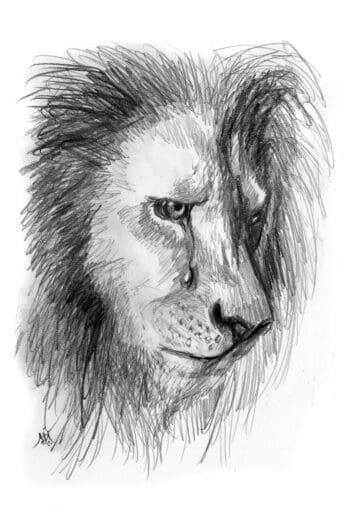Removing thorns from suffering people
By LORRAINE V. MURRAY, Commentary | Published April 3, 2023
As I walked barefooted across the rug, I suddenly felt a stabbing pain in my foot. I limped over to the bed and extracted the object that had pierced my heel, while watching in horror, as blood pooled on the floor. I discovered it was a hefty sewing machine needle, which had become embedded in the rug.
The experience gave me an inkling of the agony a crown of thorns would cause Jesus. The Gospels tell us the soldiers fashioned a circle of twigs, studded with long, razor-sharp thorns, and pressed it onto his head. They also dressed him in purple robes, the color of royalty, so they could further mock him.
Carrying that heavy cross on the road to Golgotha was made even worse by the piercing pain of the thorns. Jesus was surely blinded by the blood flowing down his face, intermingled with his tears.
 When God expelled our first parents from Eden, he warned Adam the ground would bear thorns and thistles. Jesus talked about seeds that fall on thorny ground, as a way to describe people who hear God’s words, but then become immersed in worries and pleasures, and don’t bear fruit.
When God expelled our first parents from Eden, he warned Adam the ground would bear thorns and thistles. Jesus talked about seeds that fall on thorny ground, as a way to describe people who hear God’s words, but then become immersed in worries and pleasures, and don’t bear fruit.
One of Aesop’s fables features a slave named Androcles, who escaped from his master and hid in the woods. He was terrified to see a lion pursuing him, but then realized the animal had a thorn embedded in its swollen paw. After Androcles removed it, the lion became docile and gentle.
Later, Androcles was captured and sentenced to death by facing the lion, which hadn’t been fed in days. The crowd expected the lion to tear him to pieces, but then the beast recognized him and gently licked his hand.
British author Caryll Houselander wrote about a childhood moment at boarding school, when she saw a lonely nun polishing shoes and weeping. “I raised my head and then I saw the nun was crowned with the crown of thorns.” Realizing the woman’s suffering was connected with Christ, the child helped her with her task.
So many people share in Christ’s agony today. At my parish, whenever I see the parents of a little girl who died, I picture them wearing the crown of thorns. When my neighbor’s husband recently died from cancer, I went to visit her and again envisioned the crown.
There’s a legend that explains how the robin got its red breast. It seems a little gray bird saw Jesus suffering on the cross, and flew over to remove a thorn from his forehead. As the bird did this, blood splattered upon its breast. To me, this shows that when we relieve someone’s suffering, we’re changed forever.
Mother Teresa wrote: “Each one of us should be that bird. What have I done? What comfort have I given? The little bird tried to remove just one thorn. When I look at the cross, I think of that robin. Don’t pass by the cross; it is a place of grace.”
It’s impossible to remove every thorn from life, because suffering is built into the fabric of our fallen world. Still, when Christ encountered people in pain, he was moved to help them.
This event isn’t described in Scripture, but I picture the Blessed Mother removing the crown of thorns from Jesus’ head, after he’s taken down from the cross and placed in her arms. She wouldn’t want him buried wearing this terrible device.
Let’s pray we’ll notice people wearing the crown of thorns in our lives. Let’s pray we’ll become more attuned to others’ suffering. Let’s remove as many thorns as possible from the hearts of everyone we meet.
Artwork is by Lorraine’s late husband, Jef (www.jefmurray.com). Her email address is lorrainevmurray@yahoo.com.